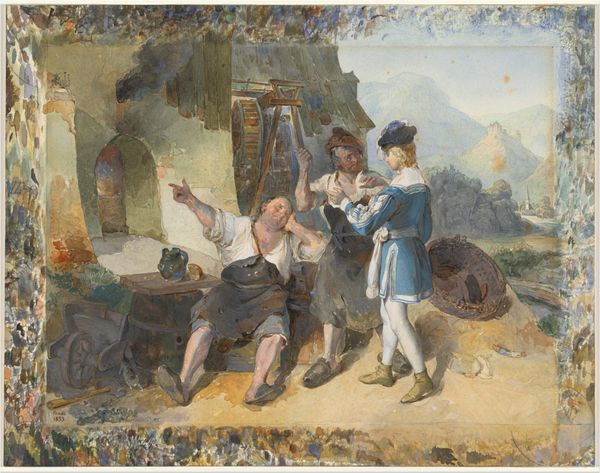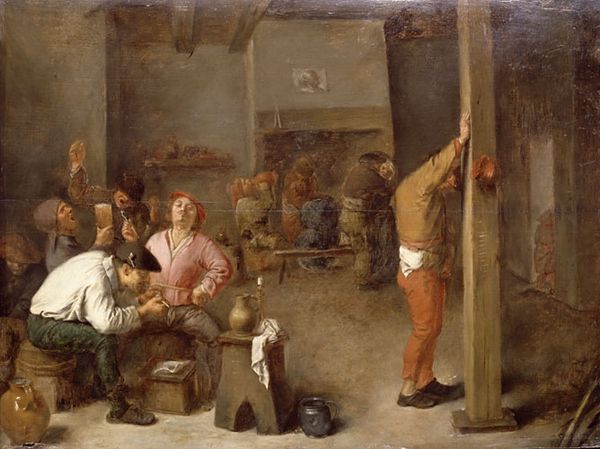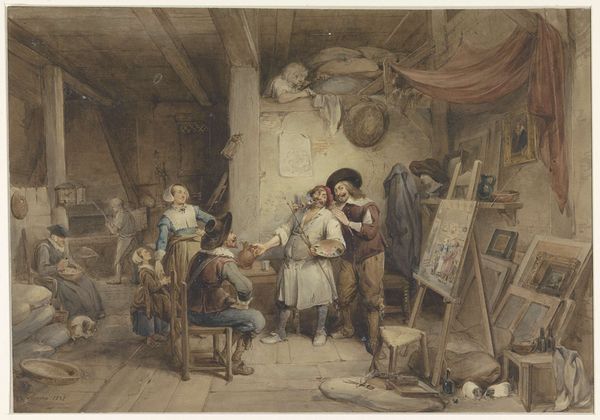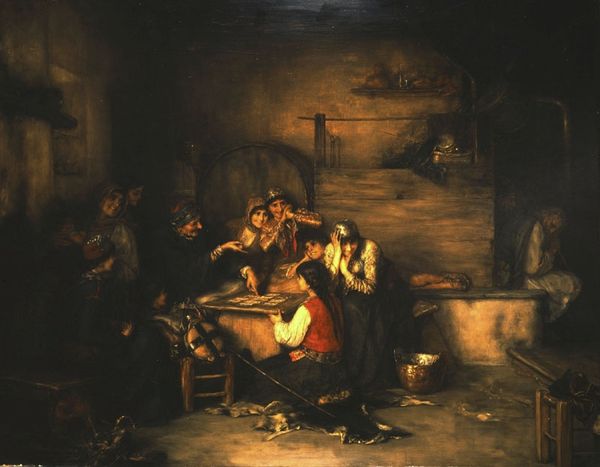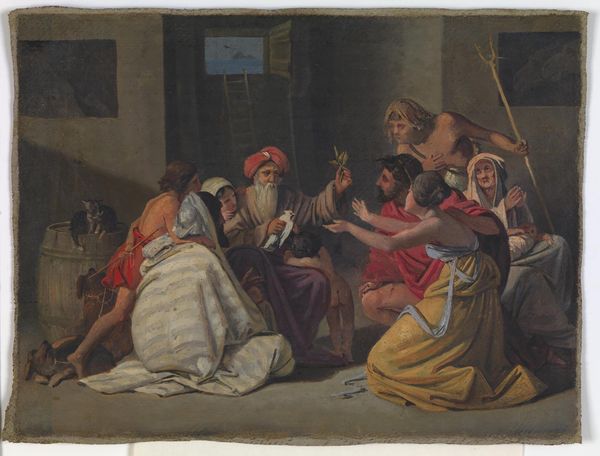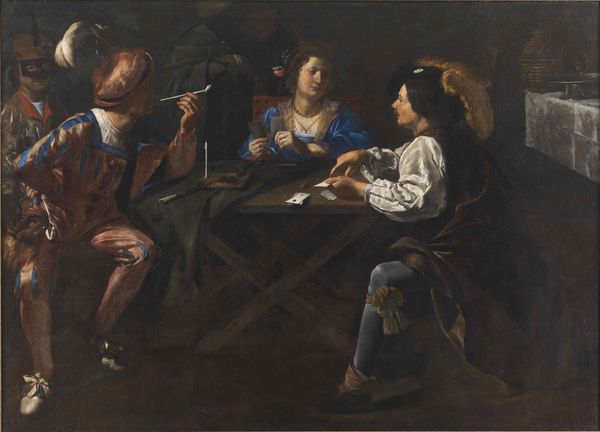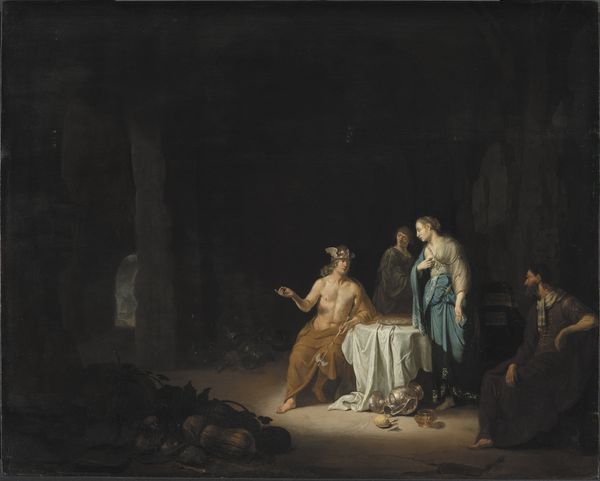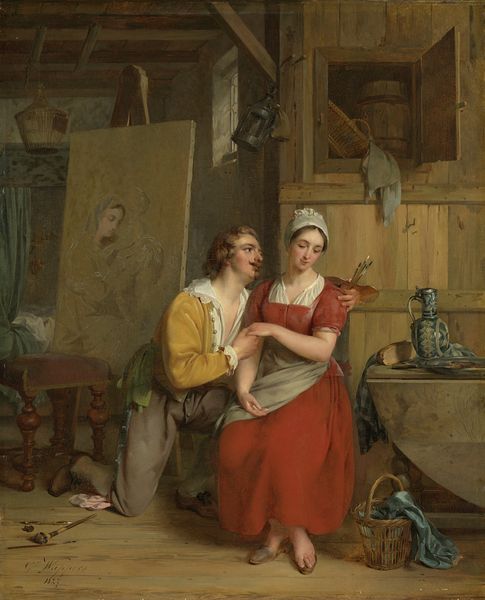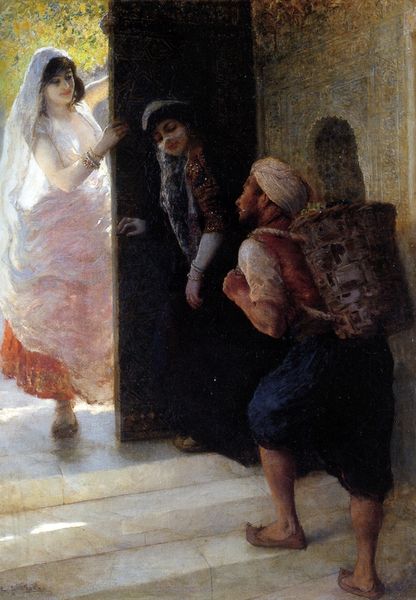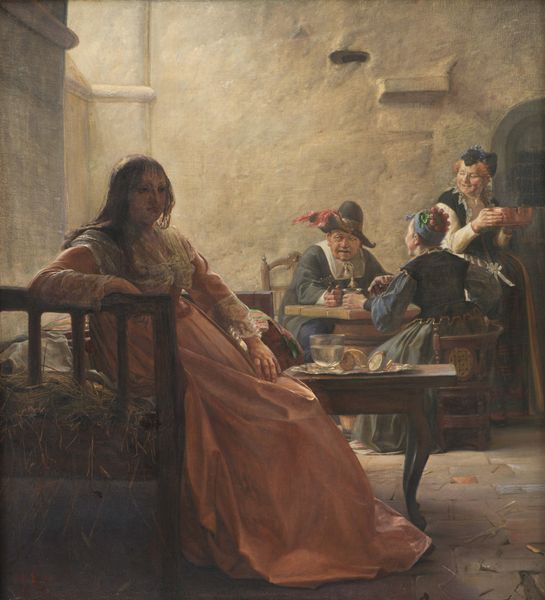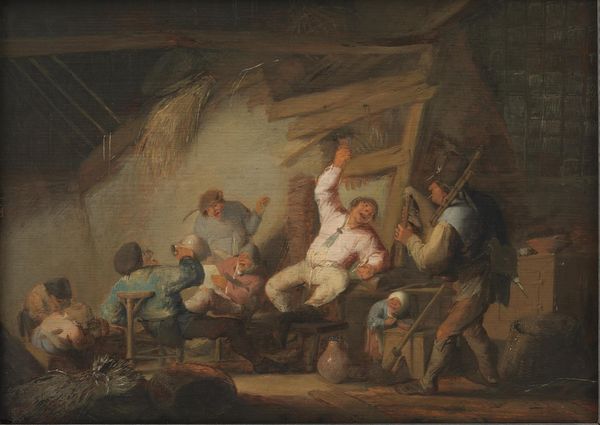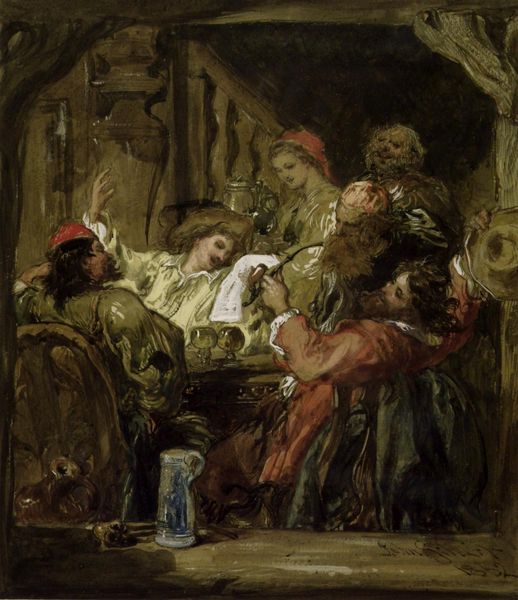
painting, oil-paint
#
baroque
#
painting
#
oil-paint
#
landscape
#
figuration
#
mythology
#
painting painterly
#
genre-painting
#
history-painting
Dimensions: 220 x 289 cm
Copyright: Public domain
Curator: Here we have Diego Velázquez's *The Tapestry Weavers*, an oil on canvas from 1660, currently residing in the Museo del Prado. Editor: It's immediately striking how grounded this piece feels. The women are robust, their work palpable. It is more like documenting daily life rather than idealized subjects. Curator: Precisely. Velázquez masterfully uses chiaroscuro, that dramatic play of light and shadow, to define the spatial relationships. Observe how the light pours in, illuminating the foreground where these women are actively spinning and weaving. The background seems to hold the finished tapestry aloft as an artistic stage set for its future use. Editor: I am drawn to the actual work happening. The spinning wheel is not simply symbolic, but is portrayed as a complex, functional tool. And beyond this, look at the different roles each worker assumes; some actively engage while others seem lost in reverie. The piece invites one to think about this collaborative effort. Curator: Yes, and structurally the tapestry in the background is equally significant. The tapestry depicts Minerva punishing Arachne, from Ovid's *Metamorphoses*, further emphasizing the themes of craft, skill, and the consequences of challenging authority. It acts as a kind of mise-en-abyme reflecting what we are seeing being made right here, yet elevated to a higher cultural echelon. Editor: Yet what does it tell us about how art and craft are regarded, and *who* is doing the work? I feel Velázquez cleverly spotlights the process of artistic creation while also confronting the gendered and social hierarchies that devalue labour intensive occupations that involve “women’s work." It becomes less about divine stories and more about challenging us to view labour and creation in their broader societal context. Curator: Your point brings further resonance, definitely, to Velázquez's layered treatment. He has arranged the figures with the meticulousness of a staged tableau; yet the painting’s strength, its overall effect, results from how all its individual segments combine structurally to make meaning through form. Editor: Ultimately, "Las Hilanderas" challenges us to think deeply about production and context, moving away from artistic interpretation and toward analyzing and reflecting about our shared humanity as laborers in service to larger systems of economic control. Curator: Indeed. Its persistent resonance over time, I suppose, can then be said to derive from its self-reflective contemplation about the act of image making, of skilled representation, and not just documenting material creation itself. Editor: Quite true. We both came into this dialogue from slightly different angles. It certainly provides abundant food for thought for any attentive audience.
Comments
No comments
Be the first to comment and join the conversation on the ultimate creative platform.
